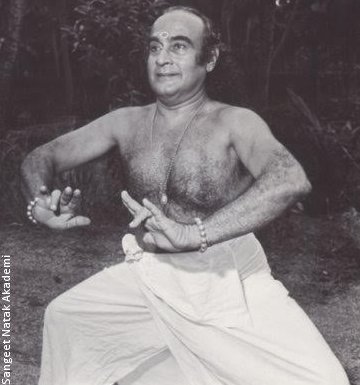VIDHA LAL
A weekly series for just KathakDuring this pandemic, everybody was trying to show their creativity, some even by cooking and cleaning, and classical dancers started putting their own videos shot in their homes, just like that. Most videos were sad—they featured melancholy poetry etc. Then I realized that slowly, people had started online festivals where they were not offering anything to dancers, but dancers were making sincere efforts, like wearing full costumes and make-up, putting up curtains, presenting a good performance any way they could. Time is money, and they spent entire days putting in this effort, despite no remuneration. This made me feel very sad. We didn't know how long we were going to be in this situation. If we are going to be like this for quite some time, like another year, I don't think the message should go out that artistes are free. This is our bread and butter. Senior artistes were not doing much of this, but the younger generation was putting a lot of content on social media for free, which I felt was dangerous. Ultimately, why would anyone pay to see such artistes (if they readily put up free new content)? Some of my content is on YouTube, so if you want to watch for free, watch YouTube. Why do you want me to come and dance 'live' for free?
USHA RK
I did my first interview with Usha RK, an arts consultant, who has worked with both veteran and young artistes and performers for over three decades, promoting and propagating classical arts. Her interesting thematic presentations have been widely appreciated, of which I have watched Devi Kshetram, Divya Pushpam, Navarasa Nayaka and many more. Many of them have been reported on my blog.
Do you go about curating an event according to a distinct concept?
I don't put together performances which have already been performed elsewhere. Often, a curator will simply choose the location and the dancer, and the artist will perform what they have already rehearsed and performed before. For my programme, they cannot do an already prepared piece. I develop the concept and give them a piece to work on. Sometimes, you get some thoughts and you begin to wonder how the concept will translate on stage. So I would like to use the word 'conceptualization' instead of curation.
I started working on conceptual programmes way back in 2006. I wanted to carve a niche doing something unusual. I took the compositions of Bhadrachala Ramadasu and I had 7 male dancers do it and it became very popular. It was the story of the poet, but told through his songs. The seven dancers portrayed the whole story of his life. Similarly, I realized that many characters from our mythology do not get too much space in the imagination, in that they are not the front runners in the story, but are vital, like Draupadi, Karna, Surpanakha, Ravana etc. So we took these characters for Patra Parichay and introduced them. For instance, Ravana is never the subject of a whole program, but in the program, we introduced him as a great hero, a Shiva bhakta and musician. We explored all the aspects of a character. So we called the series Patra Parichay. In Delhi, we did Ahalya, Surpanakha, Karna and Draupadi. It was very popular in Bengaluru and I did many more there. These were very successful and the dancers wanted more such chances.
Read more in the site
Pl provide your name and email id along with your comment









